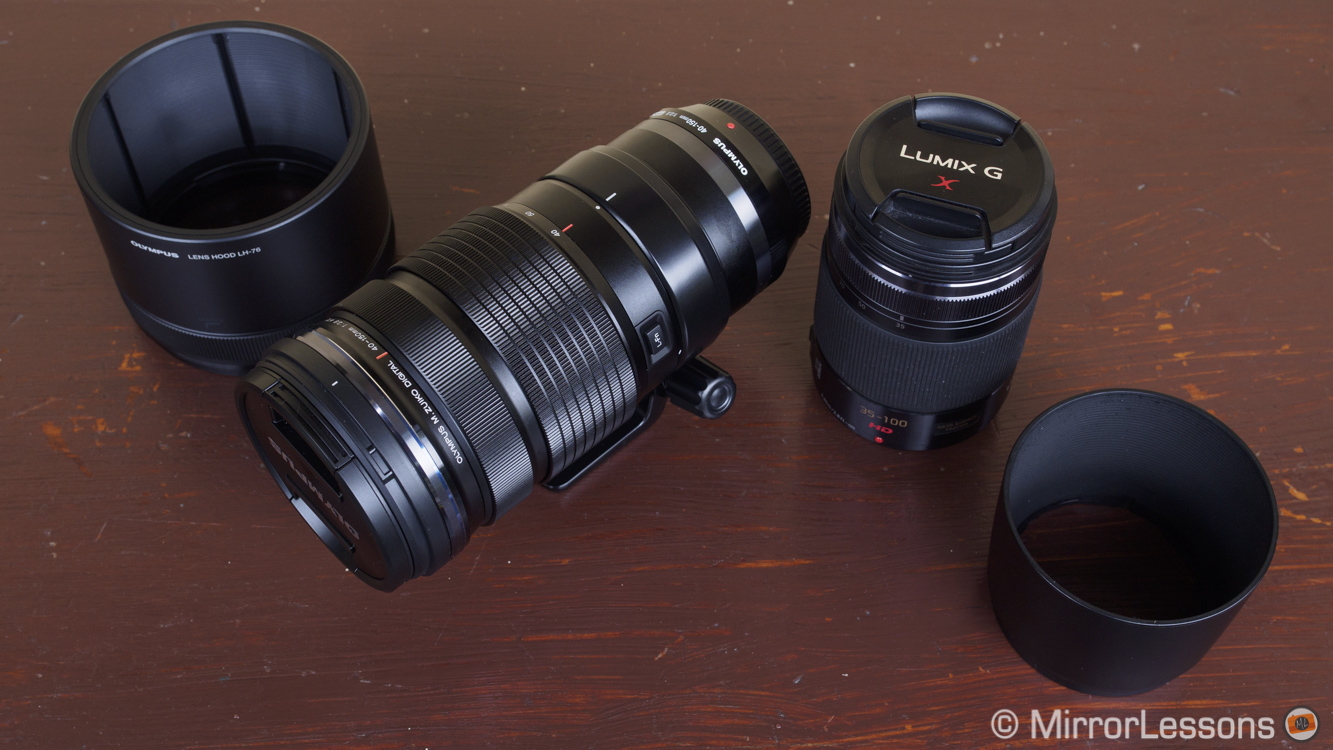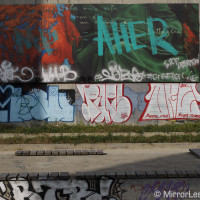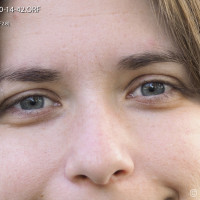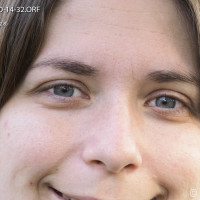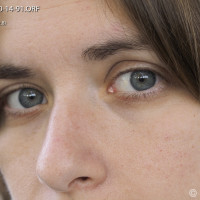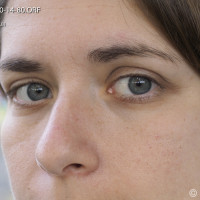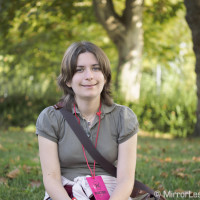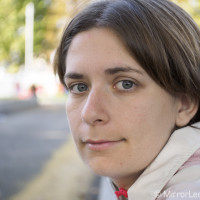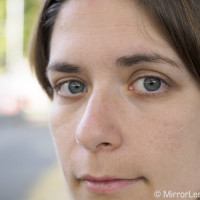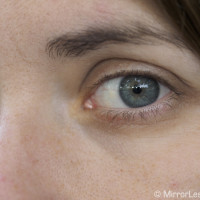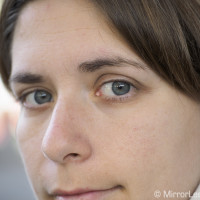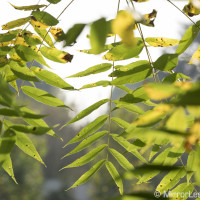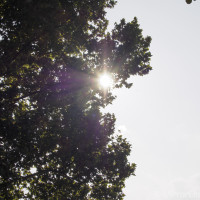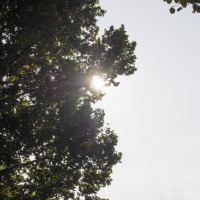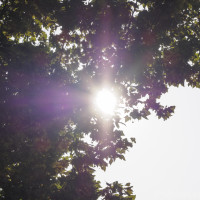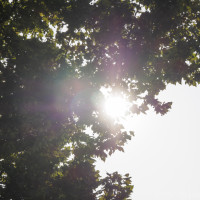At this year’s Photokina, the one aspect that all the different brands had in common as far as the mirrorless world is concerned was an increase in size as evidenced by the most recent lenses showcased. This aspect seems to have triggered different reactions. One of the criticisms is that the increase in size has made them closer to a DSLR system, therefore nullifying the main advantage: compactness and lightness. The discussion is most pertinent to Micro Four Thirds, a system well-known for its compact cameras and compact lenses.
One of the best examples of this is the Lumix 35-100mm 2.8, a professional zoom lens with a constant aperture that represents the equivalent of 70-200mm, a focal range many DSLR photographers have in their bag. When the M.Zuiko 40-150mm f/2.8 PRO was announced, the question that people began asking was: could these extra 50mm justify more than double the weight and size? And more importantly, does its size really matter? Because the interesting thing is that the M.Zuiko 40-150mm PRO is still a compact zoom for what it does.
In the end, all these doubts lead us to question where the boundaries of a compact system camera really lie.
As always, please note that with our comparison articles, our main goal isn’t to state which model is inherently better than the other. In fact, I’ll say it right up front: both are excellent lenses with very few flaws. Rather, we’d like to help you understand which lens is better suited to you and your style of photography. On that note, let’s start comparing!
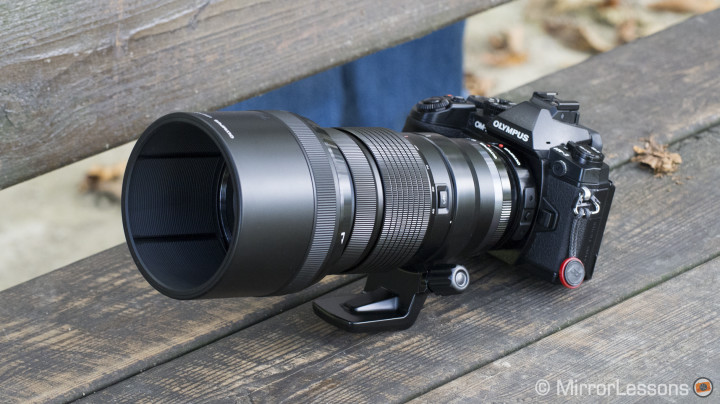
Olympus 40-150mm f/2.8 Pro
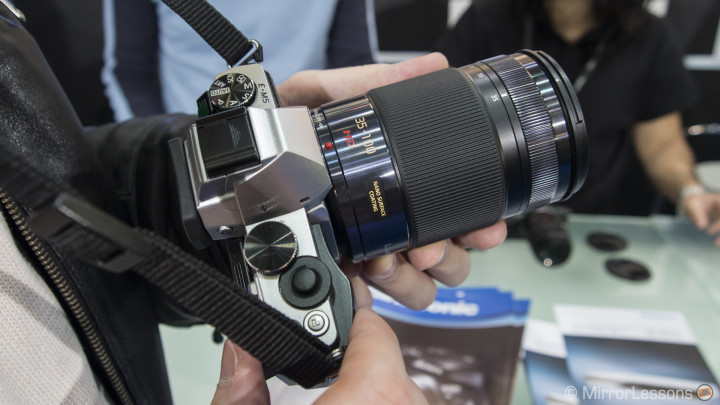
Lumix G 35-100mm f/2.8
Main Specs
Both lenses feature a f/2.8 constant aperture zoom and are compatible with both Panasonic and Olympus Micro Four Thirds bodies.
The Olympus 40-150mm f/2.8 has an equivalent focal length of 80-300mm on 35mm format (full frame). It is splash, dust and freeze proof but doesn’t include optical stabilisation since it relies on the internal stabilisation of Olympus cameras.
The Lumix 35-100mm f/2.8 has an equivalent focal length of 70-200mm on full frame format. It is splash and dust proof and includes Panasonic Power O.I.S. optical stabilisation.
M.Zuiko ED 40-150mm f/2.8 Pro
- Focal length: 40-150mm
- Focal length (equiv. 35mm): 80-300mm
- Maximum aperture: 2.8
- Minimum aperture: 22
- Number of aperture blades: 9 Circular aperture diaphragm
- Angle of view: 30 ‑ 8.2°
- Closest focusing distance: 70cm
- Lens configuration 16 elements / 10 groups
- Special elements: 1 high-refractive, 2 aspherical glass, 1 aspherical ED elements
- Lens surface coating: no
- Maximum image magnification: 0.21x (Micro Four Thirds) / 0.42x (35mm format)
- Optical Image Stabilizer: No
- Dimensions: 79.4mm Ø, 160mm
- Filter diamater: 72mm
- Weight: 760g (without tripod adapter), 880g (with tripod adapter)
Panasonic 35-100mm f/2.8
- Focal length: 35-100mm
- Focal length (equiv. 35mm): 70-200mm
- Maximum aperture: 2.8
- Minimum aperture: 22
- Number of aperture blades: 7 circular aperture diaphragm
- Angle of view: 34 ‑ 12°
- Closest focusing distance: 85cm
- Lens configuration 18 elements / 13 groups
- Special elements: 2 ED elements, 1 UED element
- Lens surface coating: yes (Nano Coating)
- Maximum image magnification: 0.1x / 0.2x (35 mm camera equivalent)
- Optical Image Stabilizer: yes (POWER O.I.S.)
- Dimensions: φ67.4 Ø, 99.9 mm
- Filter diamater: 58mm
- Weight: 360g (excluding lens cap, lens rear cap, lens hood)
Build quality and ergonomics
Let’s start with the main topic of this comparison which is the design of the two lenses.
Both lenses have a strong high-quality build and have a complete internal zoom mechanism so that the size of the lens remains the same throughout the entire focal length range.
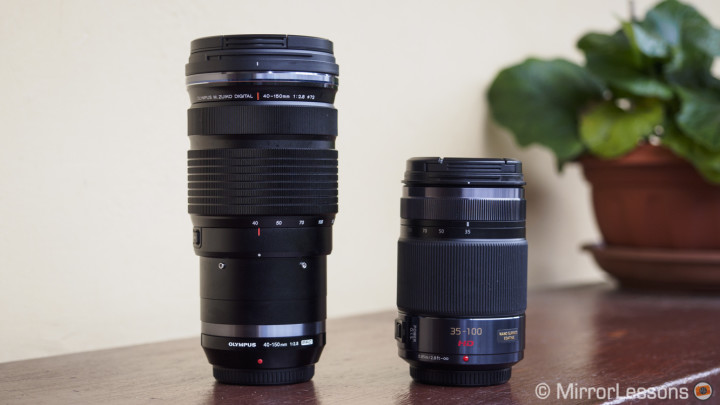
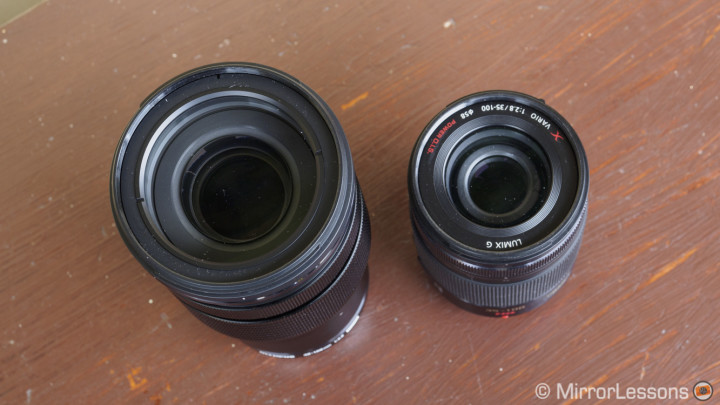
The 40-150mm is entirely made of metal and feels like a true premium professional lens. Both the zoom and focus ring are large and very smooth to turn.
Being bigger, I can also say that the 40-150mm actually gives you a better grip when shooting. Your hand naturally reaches both the zoom and focus rings. Since the Olympus lens is larger, it is easy to find a good balance when holding the camera and lens with both hands.
The 35-100mm is also made of metal with some plastic between the zoom and focus rings. The zoom ring is covered with rubber, which might be less aesthetically pleasing but feels nice to the touch. The focus ring is thinner but both rings are pleasant and precise to turn as well.
Even though it is smaller, the lens is easy to use and the thinner focus ring never really bothered me for stills (more for video when manual focusing). Since it weighs less, you can easily use the camera with one hand without feeling the need to compensate for the weight (though you may want to ensure a sharper image by making it more stable with two hands of course).
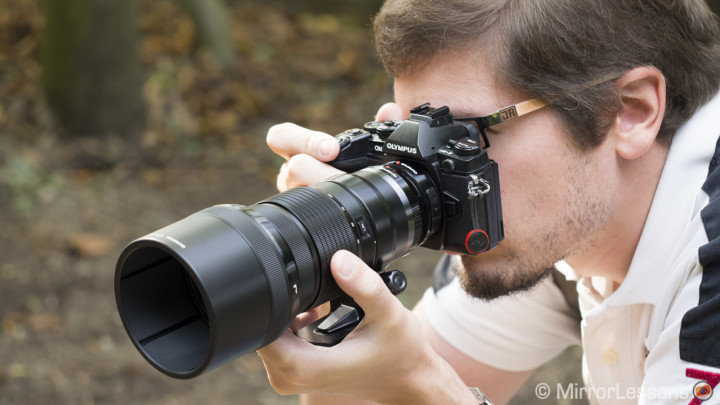
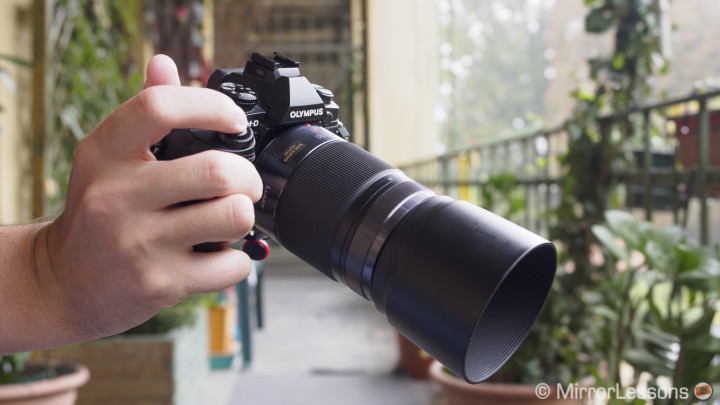
The difference in weight is something that didn’t bother me too much even after many consecutive days of shooting. For my daily work I usually carry a Lowepro Event Messenger bag with the E-M1, the 12-40mm 2.8, a flash unit and either the 75mm 1.8 or the 35-100 2.8. I had no problem replacing one of these two with the 40-150mm. It fits inside the bag just fine (with the tripod mount attached) and with the overall kit, I haven’t felt too much difference in weight. Certainly one of the main advantages of the 35-100 is that it can fit almost anywhere, even in a Cosyspeed bag or inside a large jacket pocket, which naturally makes it more portable.
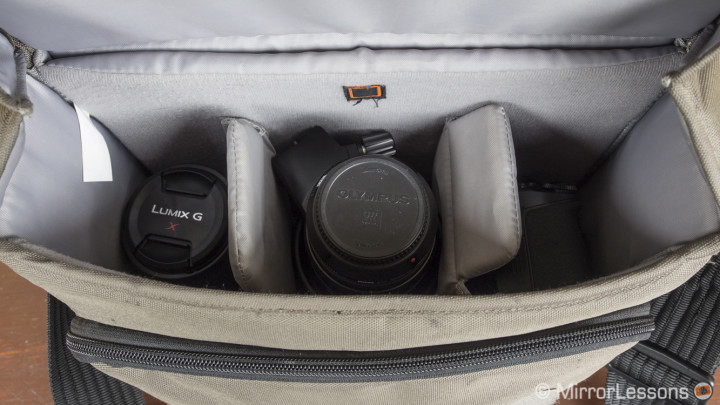
To me the real difference has more to do with the 40-150mm being less discreet. Walking around events like the Electric Run, my E-M1 and 40-150mm probably didn’t look that different from a Canon 7D and a 70-200mm f/4 from the perspective of a non-photographer. Of course, speaking as the photographer, I can confirm that the Olympus combo is smaller and lighter. With the Lumix 35-100mm, you are certainly more discreet and attract less attention. In some events it can matter while for others, it won’t.
As for the features that make the lens easier to use, the M.Zuiko has a few advantages.
The focus ring can be clutched to instantly switch to manual focusing. The lens also has a Function button on the side that your thumb can easily reach and which you can assign different functions like AF lock for example.
The hood is also very nice with a clever mechanism to immediately retract it without the need to unmount it and reverse it like on the M.Zuiko 60mm macro.
The Lumix 35-100mm only has the switch button to activate or deactivate the optical stabilisation.
The hood is standard and needs to be reversed to be slotted onto the lens.
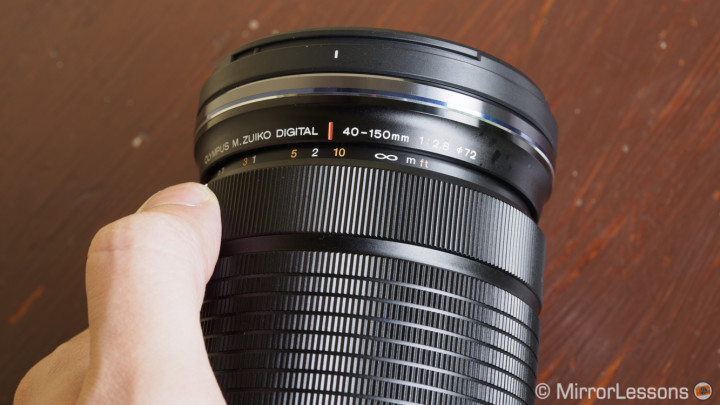
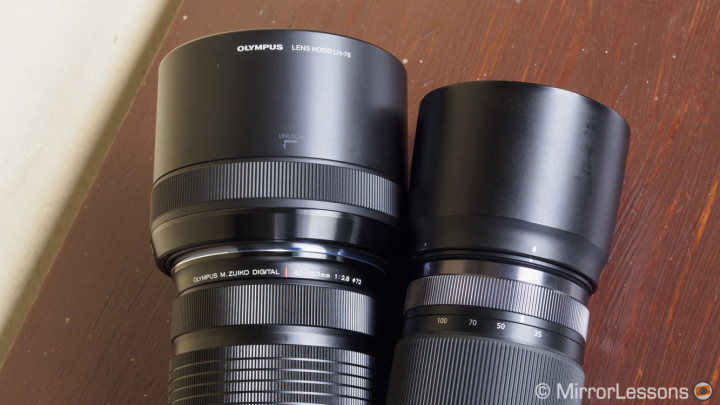
Given the size of the 40-150mm, Olympus also included a tripod ring mount to achieve a better balance. Considering this an advantage wouldn’t really be fair since you don’t need it with the 35-100mm. The tripod mount can of course be removed (you will have to unmount the lens from the camera to do it). For my daily work I’ve never brought it with me as I don’t use tripods.
Image Quality

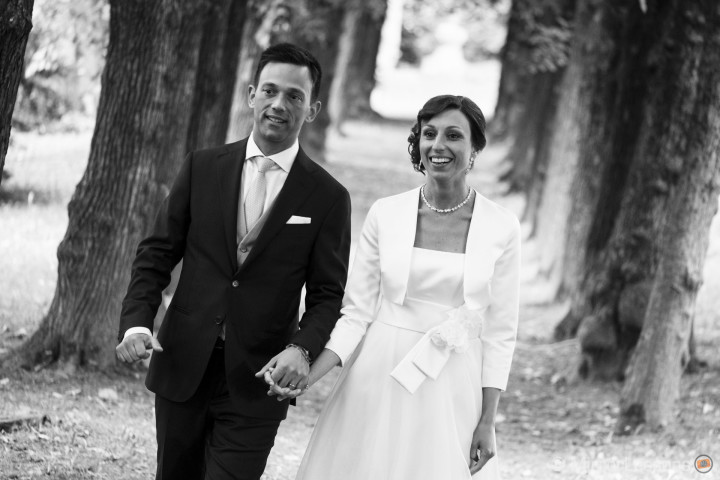
From a real world point of view, both lenses produce very nice images in terms of sharpness, bokeh, contrast and whatever else you can think of.
There are some differences. Some of them are really minor and will only interest pixel-peeping enthusiasts while others are more significant. I think in the end it all comes down to the difference in versatility, which is in my opinion an advantage of the M.Zuiko lens when it comes to image quality.
Concerning sharpness, both lenses perform nearly the same at their shortest and longest focal lengths. I did a basic test with a graffiti wall to have enough texture to evaluate details. I shot the same images at f/2.8 and f/8 at 40mm, 70mm and 100mm.
At f/2.8, the Lumix lens seems slightly sharper than the M.Zuiko lens at the shortest and middle focal length but the difference is almost not worth mentioning. At 100mm they look basically the same.
At f/8, they perform the same at 40mm and 70mm. At 100mm, I could give slightly more credit to the M.Zuiko but here again it is almost unnoticeable.
I also took the same pictures at 35mm for the Lumix and 150mm for the M.Zuiko but there aren’t any significant differences here either. Both lenses are very sharp even at their fastest apertures.
With a shorter focus distance, the sharpness performance can be even easier to detect. Here again, I don’t see a dramatic difference between the two lenses in the portrait shots I took of Heather and in the photos I used to show the bokeh performance later on. In one example the M.Zuiko seems sharper but again the difference is minimal.
Bokeh and out-of-focus rendering is another point that many are interested in. With Micro Four Thirds cameras I would generally tend to use faster lenses when it comes to portraits, but if used well both lenses can deliver interesting results.
For this second series of tests, I took pictures of Heather at the same distance using various focal lengths with both lenses. Note that the composition may slightly vary from shot to shot since I didn’t have a tripod with me.
At the shortest focal length, there is a difference that is related to the 5mm difference between 35 and 40mm. To get the same composition, I would have had to stand further away from the subject with the M.Zuiko lens or closer to her with the Lumix 35-100mm.
We can see that the M.Zuiko has a nicer bokeh already (more rounded and uniform) but this first observation is not totally reliable because of the focal length difference. If we want to talk portraits on MFT, let’s use a longer focal length. Below are two examples at 60mm and 85mm.
The difference here is more noticeable. The Lumix 35-100mm’s bokeh seem less rounded and the overall look has a slightly “swirly” effect, while on the M.Zuiko it is perfectly rounded and the out of focus area is more uniform.
Finally, at 100mm you can see two examples below. There are some differences as well but given the reduced depth of field, it is less noticeable.
Now the M.Zuiko has an advantage here and that is its extra 50mm in length. This means that for example I can get a closer shot of Heather just by zooming in. Or if I want a similar composition as the shot taken at 85mm, I can also move backwards from the subject and take the shot at 150mm. You will notice that the background changes a little bit because to create enough distance between myself and the subject, I had to walk up a small grassy incline. But the rendering is really nice. I also included the same kind of example with the head shots.
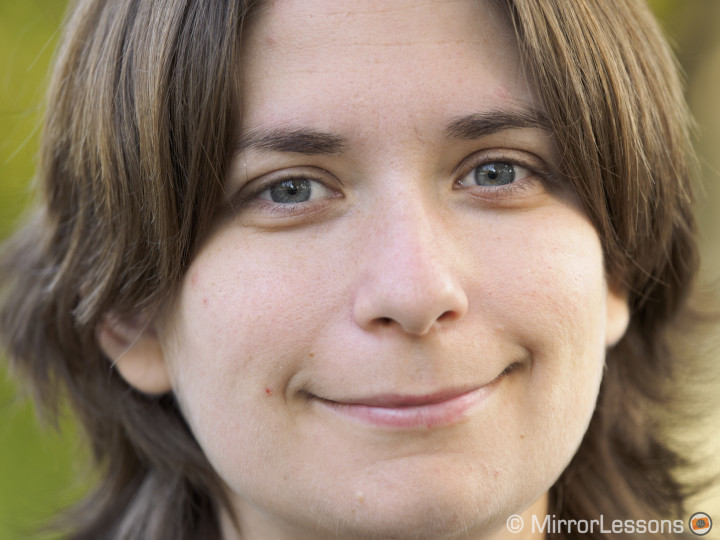
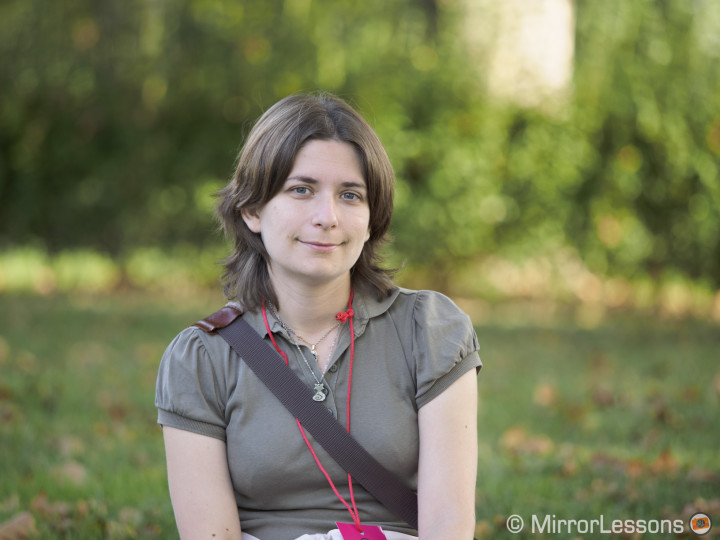
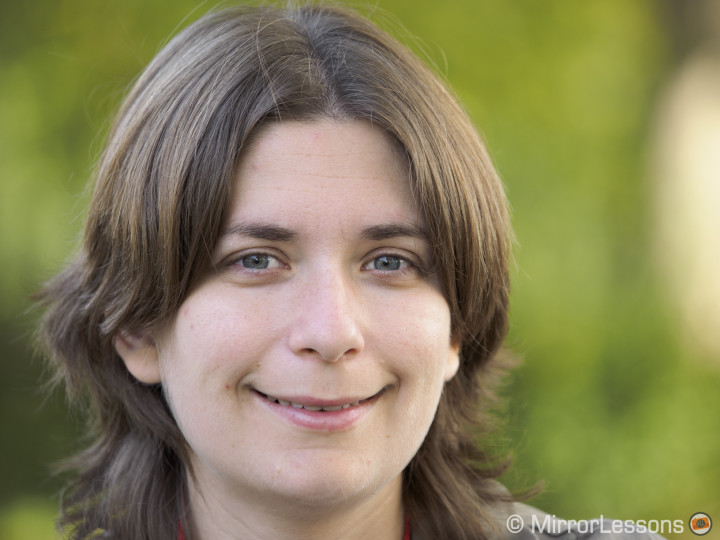
Another aspect is the closest focus distance, which can be interesting for portraits since the closer your focus point, the more your background will be blurred. The M.Zuiko has a minimum focus distance of 70cm, the Lumix of 85cm but the difference is that for the M.Zuiko it remains constant throughout the entire focal length range, while with the Lumix I had to step back slightly at 100mm.
Let’s start with two pictures taken at the same distance at the shortest focal length. You will notice that Heather (who had a cold) has started to get tired of me taking pictures of her! 🙂
Of course with the M.Zuiko I can get closer to my subject.
At the longest focal lengths, with the M.Zuiko I can take a quasi macro shot of Heather’s eye while with the Lumix lens I get the same composition as the M.Zuiko at 40mm and 70cm shown above.
So on the bokeh front, my conclusions are that the M.Zuiko seems to have better rendering concerning the roundness and uniformity of the out of focus areas. But we are certainly not talking huge differences here and bokeh taste can also be subjective. Actually I think that the real benefit of the M.Zuiko lens is its extra 50mm in length as it gives you the possibility of a narrower angle of view which results in a more magnified out of focus area for the same composition. Moreover, the minimum focusing distance of 70cm has its own set of advantages and this is why I consider the 40-150mm more versatile when it comes to image quality. That said, both lenses do really well for portraits and I will never get tired of saying that the more you fixate on a blurred background, the less you are concentrating on your subject. Also, talking strictly from a portrait photography point of view, I would prefer to work with the 45mm f/1.8, the 75mm f/1.8 or the Nocticron 42,5mm f/1.2.
The last image quality test I did was in a backlight situation to see micro contrasts and flare rendering. Regarding the ability to retain details, both lenses work fine. The Lumix seem to handle flares better.
Autofocus and stabilisation
In still mode, I haven’t found any particular issues with either lens on the E-M1 or the GH4. They are fast, they are reliable–they simply work. The M.Zuiko 40-150mm has a dual linear motor that makes it extremely silent but I’ve never had to complain about the Lumix 35-100mm regarding this aspect. In continuous focusing mode, the M.Zuiko is slightly faster on the OM-D E-M1 while both lenses give similar results on a Lumix body like the GH4. This gets even more noticeable for AF-C in video mode.
In my first impressions article about the 40-150mm f/2.8, I had some trouble in AF-C with the GH4 during my first video recording where the camera had trouble changing the focus point and tracking the subject. So I updated the camera to the latest firmware update available and now it works fine. Below you can watch a simple “rain dancing” video with Heather once again as my model. You will also notice that the Lumix lens makes a huge difference when it comes to stabilising the GH4.
As for image stabilisation, there is another important difference to note.
The M.Zuiko doesn’t have O.I.S. and relies on the IBIS of the E-M1 or any other Olympus camera.
The Lumix 35-100 has optical stabilisation since most Lumix bodies don’t have built-in IBIS.
We are talking about two different technologies. I could see in different occasions that there isn’t a huge difference with telephoto lenses. If I use the 35-100mm on the E-M1, then the GH4, I can say that the 5-axis stabilisation and the Power O.I.S. give similar results. It is something I already tested for our E-M1 vs GH4 comparison and experienced out in the field.
In this case, I just wanted to see if the size and weight of the 40-150mm f/2.8 would influence the results when using a slower shutter speed. When I took the first images, I was surprised to see so many picture that were slightly blurry with not-too-slow shutter speeds. I wasn’t sure if this was related to me not being stable enough, a shutter shock problem or something else.
So I ran a quick test with me holding the camera from a comfortable position (sitting on a bench) and taking pictures at different shutter speeds with both lenses on the E-M1. The results proved that I was wrong about my first impression. The 5-axis stabilisation works great with the 40-150mm even at the longest focal length and even with the MC-14 teleconverter. I then took some pictures standing up and the results were the same.
My conclusion here is that the stabilisation also depends on how steady the person is when holding the camera and the position of his body when taking the shot. During my first day with the M.Zuiko lens, I took many shots down on my knees or in more uncomfortable positions since many of the animals were small. So I might have been less stable than usual. While it is true that you can have a better grip with a bigger lens like the 40-150mm, it is also true that it is heavier. As such it can give the 5-axis stabilisation more work to do especially at the longest focal length if you are not steady enough. If you plan to do some bird or wildlife shooting, in general I would recommend a tripod as it will allow you to work easily, especially with the MC-14. But the 5-axis IBIS can be useful as well.
For video work, if you are using a Lumix camera, then the 35-100mm is certainly something to consider for its optical stabilisation. The M.Zuiko lens can do very well as long as you use a solid video tripod.
The MC-14 teleconverter
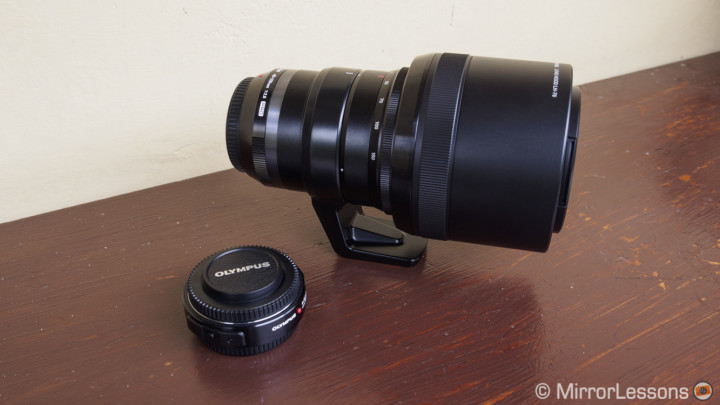
There is another advantage of the M.Zuiko 40-150mm and that is the dedicated teleconverter that Olympus released with the lens. It only works on the M.Zuiko lens and the upcoming 300mm f/4. It won’t work on the 35-100mm because of the protruding lens of the teleconverter which won’t let you mount it on the Lumix lens.
This accessory can be very interesting for wildlife photographers or for people that might need that extra reach in various situations. It works well without decreasing image quality or the speed of the autofocus.
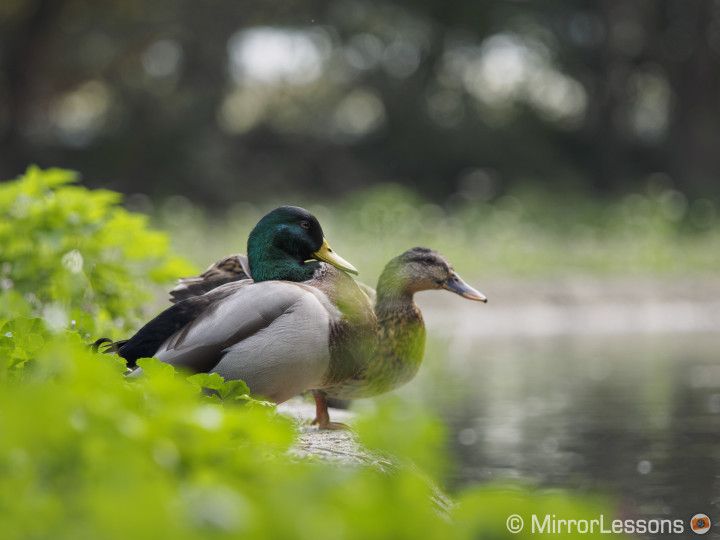
Conclusion
The conclusion I can draw after comparing these two lenses is that there isn’t a clear winner. Rather the specific needs of the photographer might push him towards one option or the other. They are similar in many ways yet very different, but there is no doubt that both have a place in a photographer’s bag.
The M.Zuiko 40-150mm is the more interesting option in terms of image quality and performance. The 50mm of extra reach can prove very useful in different situations such as event work or portraiture. The MC-14 teleconverter is also an extra accessory that makes this lens even more interesting. I also prefer its bokeh rendering.
I have used the 35-100mm 2.8 for more than a year for different assignments or for personal purposes and it is a great lens. Its advantage is without a doubt the small size and weight. Panasonic managed to design a professional lens with the standard telephoto zoom range in a very compact body and this certainly represents what is best about the MFT system. So to me the Lumix 35-100mm is more versatile thanks to its size.
All the rest is subjective. Personally speaking, I am not sure if I will buy the 40-150mm. I am not a wildlife photographer and for most of the events I do, 100mm is more than enough. Actually, I’ve even stopped using the Lumix lens for much of my work in favour of the 75mm 1.8, which is faster for indoor shooting. In short, I am not sure that those extra 50mm are something I would use or require all the time.
In the end, it is not a question of which is bigger or which looks more like a DSLR lens. Rather it is a question of needs.
The 40-150mm is certainly a lens aimed at professionals. I feel that Olympus did the right thing by releasing it, and even more significantly, by not copying the Lumix lens but making something different instead. This way, users can choose the lens that suits them best. Both are great lenses, and both have a rightful place in the MFT system.
Choose the M.Zuiko 40-150mm f/2.8 if:
- You’d find the extra 50mm in focal length really useful
- You will use it in conjunction with the MC-14 often
- You want a versatile lens that can take on events, wildlife and portraits
Choose the Lumix 35-100mm f/2.8 if:
- A standard telephoto zoom range is enough.
- You want a compact premium telephoto lens that can fit anywhere
- You will use it for video shooting on a Lumix camera
Reviews
You can also read our reviews and related articles about the two lenses:
